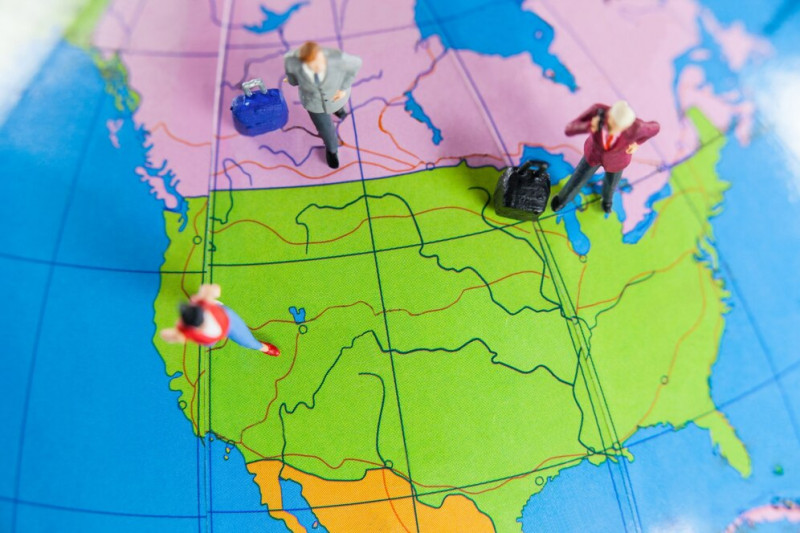Visa Exemptions for Canadian Permanent Residents

Impact of Waiver Removal and Current Requirements
Summary
Canadian permanent resident status once carried a special privilege at U.S. ports of entry: citizens of certain countries holding Canadian PR cards could visit the United States temporarily without obtaining a nonimmigrant visa. However, that blanket exemption was rescinded in 2003, and today all Canadian PRs generally require a U.S. visa for temporary stays. Nonetheless, holding Canadian PR status still offers practical advantages—such as the ability to apply for a U.S. visa at a Canadian consulate and streamlined border processing—that can ease the path to short-term travel.
On This Page You Will Find:
- Overview of Permanent Resident Status
- Historical Visa Exemption for Canadian PRs
- Removal of the PR Visa Waiver & Current Requirements
- Practical Implications for Canadian Permanent Residents
- Conclusion
Overview of Permanent Resident Status
A Canadian permanent resident (PR) is authorized to live, work, and study indefinitely in Canada under the Immigration and Refugee Protection Act. PRs also qualify for provincial health care and have many of the rights of citizens, though they must maintain residency obligations to avoid losing status.
Historical Visa Exemption for Canadian Permanent Residents
Prior to 2003, the U.S. Department of State and Department of Homeland Security maintained a regulation waiving the nonimmigrant visa requirement for certain Canadian PR card holders. Under 22 CFR 41.2(b), permanent residents of Canada or Bermuda who were nationals of designated Visa Waiver countries could present a valid foreign passport and Canadian PR card, instead of a U.S. visa, for visits of up to 90 days for business or tourism.
Eligible Country List “A” included (among others): Antigua, Australia, Bahamas, Bangladesh, Barbados, Belize, Brunei, Cyprus, Dominica, Fiji, Ghana, Guyana, India, Ireland, Jamaica, Kenya, Malaysia, Malta, New Zealand, Nigeria, Pakistan, Singapore, South Africa, Sri Lanka, Trinidad & Tobago, United Kingdom, and Zimbabwe.
Removal of the PR Visa Waiver & Current Requirements
Waiver Rescission
In an interim rule published January 31, 2003, the Departments eliminated the visa and passport waiver for Canadian and Bermudan PRs, amending 41.2(b) to require that all permanent residents obtain the appropriate nonimmigrant visa before entry.
Today’s Entry Rules for Canadian PRs
- Visa Requirement: Canadian PRs must hold a valid nonimmigrant visa for temporary visits (tourism, business, etc.) just like other third-country nationals, unless they are also citizens of a Visa Waiver Program country through their passport.
- Visa Waiver Program (VWP): Only bona fide citizens of the 41 designated VWP countries may travel under ESTA for stays up to 90 days; permanent residency status alone does not confer ESTA eligibility.
- Documentary Requirements: Canadian citizens enjoy broad visa exemptions, but PRs are explicitly excluded from these provisions and must present both a valid passport and visa.
Practical Implications for Canadian Permanent Residents
-
Applying for a U.S. Visa in Canada
As a Canadian PR, you may apply for your U.S. nonimmigrant visa at any U.S. consulate or embassy in Canada. Many PRs find shorter wait times for appointments in Canada versus their country of origin. -
Border Processing
Upon arrival at a U.S. port of entry, present your passport, Canadian PR card, and U.S. visa to CBP officers. Your PR card serves as proof of legal residency in Canada and may expedite identity verification. -
Short-Term Visits & Business Trips
If you also hold citizenship of a Visa Waiver country, you can leverage ESTA; otherwise, secure a B-1/B-2 visa for travel up to 180 days, or the appropriate employment/trade visa (e.g., TN under USMCA for Canadian citizens only). -
Maintaining PR Status
Remember that lengthy stays in the U.S. do not count toward Canadian PR residency obligations. Plan trips so you accumulate at least 730 days in Canada over each five-year period.
Conclusion
While Canadian permanent resident status no longer grants automatic visa exemption for temporary U.S. visits, holding a PR card still offers tangible benefits: you can apply for a U.S. visa from within Canada under familiar procedures, enjoy streamlined identity checks at ports of entry, and potentially face shorter consular wait times. Understanding both the historical context and current regulations ensures you choose the right visa path for your next trip south of the border.
